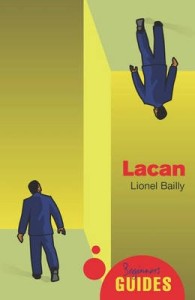Lacan Beginner’s Guide – Lionel Bailly
In a recent Jungian Master Class, I was introduced by Stephen to the work of the controversial and charismatic psychiatrist and psychoanalyst, Jacque Lacan, arguably one of the most influential critical thinkers of the 20th century.
Considered the most important psychoanalyst since Sigmund Freud, Lacan’s teachings and writings explore the significance of Freud’s discoveries and deal with absorbing questions such as what it is that enables individuals to become aware of themselves as autonomous thinking, feeling beings; how a human life is best lived and fulfilled; the driving force behind human behavior; what is it that we desire. Excited I rushed home to read more of Lacan’s work, only to discover that Lacan is notoriously difficult to read -his theories appear obscure and are difficult to grasp, a difficulty compounded by his use of terms from mathematical fields.
“Lacan was an inventor of concepts and freely ascribes to common words new meanings within his theoretical model – just as would a philosopher, or, for that matter, any inventor. Accordingly, in order to understand his theory, readers must learn to accept new definitions for words, and drop the assumptions they may already have; acquiring the Lacanian vocabulary is a prerequisite for being able to understand his theoretical models, particularly as they became more and more complex, building upon concepts he invented and named.” (p.3)
It appeared my short foray into Lacan had come to an end, until Stephen handed me a copy of Lacan Beginner’s Guide by Lionel Bailly. This book, intended for readers without a background in psychoanalysis or psychology, introduces the concepts of Lacan by way of what Bailly refers to as “deliberate over-simplification” (p.4) and then builds upon this understanding with additional layers of complexity. And suddenly I’m reading, understanding and captivated by Lacan’s work. But don’t misunderstand me, this book is still a challenging read, Lacan’s thoughts have to be grappled with, they are like nothing you have experienced before and take you into new ideas, new ways of thinking, therein lies the delight and the challenge.
Bailly begins by outlining the historical context within which Lacanian thought arose and the influence of surrealism, philosophy, linguistics and structuralism on Lacan – invaluable insight needed to begin to understand and read Lacan.
This book covers all of Lacan’s major ideas – the Mirror Stage; the language structure of the unconscious; the other; the paternal metaphor; theory of the three registers; the role of desire; the object of desire – l’object petit a; gender bending – the formula of sexuation; the four discourse or four forms of relationships.
I was fascinated by Lacan’s concept of ‘The Mirror Stage’, the question of consciousness and self-consciousness and in particular what it is that enables individuals to become aware of themselves as autonomous thinking, feeling beings? Lacan proposed that when an infant recognizes itself in the mirror, between the ages of six and eighteen months, this indicated a stage of psychological development marking the recognition of one’s self as an “I”. The mirror stage is how the infant literally comes to see itself as a separate individual. For Lacan, the ego emerges at this moment and is a crucial stage in the development of the individual’s sense of self. This recognition of self begins the process of developing an identity distinct from others and yet at the same time dependent on the images of the other. Now comes the really exciting stuff – this recognition of “I”, Lacan refers to as the “Ideal-I” – since infants see themselves as being whole and independent identities, separate from the other, at the same time the mirror image of themselves is a fictional correspondence, as what the infants sees does not and never will match what they feel and experiences. This gap between seeing in the mirror and the actual internal feelings and experiences splits the ego, resulting in individuals spending the rest of their lives attempting to close or cover up the gap between the ideal image and the experienced self. By situating the “I” of the subject in a fictional context, the individual aspires to achieve an impossible ideal.
The concept of desire and Lacan pursuit of the philosophical question of how a human life is best lived and fulfilled, changed my world. Lacan come to the conclusion that desire is the driving force behind all human behavior. What interested Lacan was the question – a desire for what? Through the examination of the patterns that play out again and again through our lives, tracing the furrow of a signifier in symptoms, dreams, slips of the tongue or tracing the patterns that play out in our lives, we can decipher the secret cipher, the meaning, the sense, animating our lives and imbuing it with meaning and so untangle our desires from compromise, defense and transference.
For an interesting application of this concept read Stephen’s blog:
Lacan’s provides a unique framework within which we can really look at our lives, our patterns; Bailly’s Lacan Beginners Guides is an invaluable introduction to understanding this framework.
Interested? You can find the book at: Amazon or Kalahari
For a short biography and introduction to Lacan follow this link
Until next time, I wish you great books and stimulating reading!
Tasha



Leave a Reply